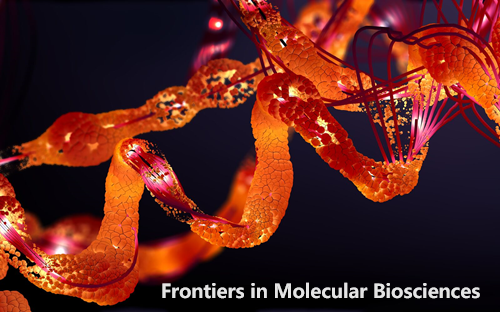Structural bases for blockade and activation of BK channels by Ba2+ ions
IF 3.9
3区 生物学
Q2 BIOCHEMISTRY & MOLECULAR BIOLOGY
引用次数: 0
Abstract
We studied the impact of BaBa2+ 离子阻断和激活 BK 通道的结构基础
我们研究了 Ba2+ 离子对大电导钾(BK)通道的功能和结构的影响。由于 BK 通道能将离子成分与膜电压信号结合起来,因此离子成分在 BK 通道的生理学研究中起着至关重要的作用。Ca2+ 通过所有 K+ 传导调节器(RCK)结构域激活 BK 通道,而 Ba2+ 则与 RCK2 结构域发生特异性相互作用。研究表明,Ba2+ 还能通过与通道的选择性过滤器结合而阻断钾的渗透。这里展示的高浓度 Ba2+ 存在下的plysia BK 通道低温电子显微镜结构(PDBID:7RJT)显示,Ba2+ 占据了选择性过滤器中的 K+ S3 位点。在 S2 和 S4 位点观察到了归因于 K+ 离子的密度。还发现 Ba2+ 离子与高亲和力 Ca2+ 结合位点 RCK1 和 RCK2 结合,这与功能研究表明 Ba2+ 通过 Ca2+ 碗位点(RCK2)增加开放概率的观点一致。与本文介绍的第二个结构(PDBID:7RK6)进行的比较分析显示,RCK1 和 RCK2 结构域之间发生了局部变化,表明 RCK 离子结合位点之间存在协调动力学,可能与通道的激活/阻断有关。观察到的 Ba2+ 在 RCK1 和 RCK2 位点上的密度以及选择性滤波有助于加深对 Ba2+ 在 BK 通道调节中双重作用的结构基础的理解,从而丰富该领域的现有知识。
本文章由计算机程序翻译,如有差异,请以英文原文为准。
求助全文
约1分钟内获得全文
求助全文
来源期刊

Frontiers in Molecular Biosciences
Biochemistry, Genetics and Molecular Biology-Biochemistry
CiteScore
7.20
自引率
4.00%
发文量
1361
审稿时长
14 weeks
期刊介绍:
Much of contemporary investigation in the life sciences is devoted to the molecular-scale understanding of the relationships between genes and the environment — in particular, dynamic alterations in the levels, modifications, and interactions of cellular effectors, including proteins. Frontiers in Molecular Biosciences offers an international publication platform for basic as well as applied research; we encourage contributions spanning both established and emerging areas of biology. To this end, the journal draws from empirical disciplines such as structural biology, enzymology, biochemistry, and biophysics, capitalizing as well on the technological advancements that have enabled metabolomics and proteomics measurements in massively parallel throughput, and the development of robust and innovative computational biology strategies. We also recognize influences from medicine and technology, welcoming studies in molecular genetics, molecular diagnostics and therapeutics, and nanotechnology.
Our ultimate objective is the comprehensive illustration of the molecular mechanisms regulating proteins, nucleic acids, carbohydrates, lipids, and small metabolites in organisms across all branches of life.
In addition to interesting new findings, techniques, and applications, Frontiers in Molecular Biosciences will consider new testable hypotheses to inspire different perspectives and stimulate scientific dialogue. The integration of in silico, in vitro, and in vivo approaches will benefit endeavors across all domains of the life sciences.
 求助内容:
求助内容: 应助结果提醒方式:
应助结果提醒方式:


